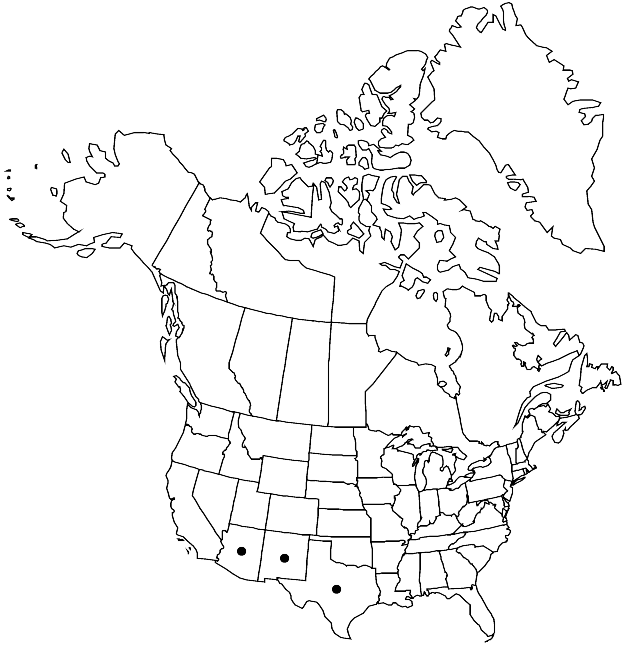Pseudotaxiphyllum homomallifolium
Caldasia 16: 267. 1991.
Plants in thin to dense mats, yellowish. Stems 1.5 cm, 1–2 mm wide, occasionally complanate-foliate. Leaves erect-spreading, upturned-homomallous, distant to close and overlapping, lanceolate to ovatelanceolate, symmetric, smooth, 0.8–1.2 × 0.3–0.5 mm; margins plane, serrulate nearly to base; apex long-acuminate; ecostate or costa double, weak; alar cells poorly differentiated, few short-rectangular cells often present; medial laminal cells 60–120 × 5–9 µm; distal cells smooth. Specialized asexual reproduction absent. Sexual condition autoicous. Seta 0.8–1.6 cm. Capsule erect, horizontal, or slightly cernuous, ellipsoid, 1.4–1.7 mm; operculum long-conic to short-rostrate. Spores 9–16 µm.
Phenology: Capsules mature spring–summer.
Habitat: Rock, under rock ledges
Elevation: moderate to high elevations (1400-2000 m)
Distribution

Ariz., N.Mex., Tex., Mexico (Sonora)
Discussion
Pseudotaxiphyllum homomallifolium occurs in Cochise, Navajo, and Santa Cruz counties in Arizona, Doña Ana County, New Mexico, and Kimble County, Texas.
Pseudotaxiphyllum homomallifolium is distinguished from the other two species of the genus by its long-acuminate, upturned-homomallous leaves with broad laminal cells. The plants somewhat resemble Campylium, but the leaf apices are not channeled like the leaves of that genus. Foliose pseudoparaphyllia were attributed to P. homomallifolium when Redfearn described the species, but these are probably not pseudoparaphyllia. The multicellular structures rarely found on the stems appear to be part of a developing branch primordium because they sometimes are not even evident, and they are not located on the stems at the bases of mature branches as are typical pseudoparaphyllia.
Selected References
None.